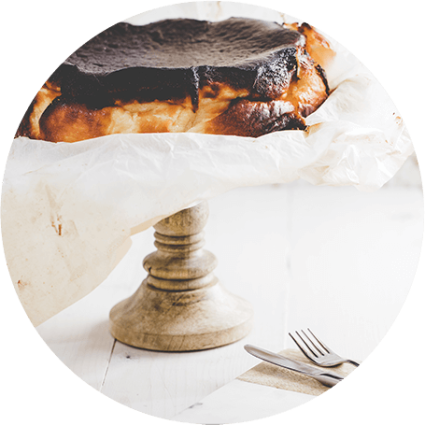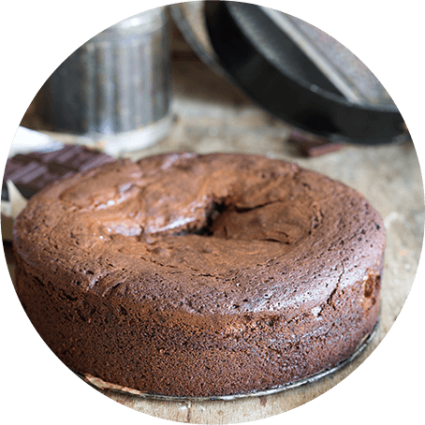Here are a couple of tricks for hiding and
disguising any mistakes.
Cake split during cooking or breaks coming out of the tin – ‘glue’ the pieces together with some icing, and then ice the cake as usual. If it is a 2 tiered cake, place the split cake on the bottom, so pressure from the top cake will keep it together. Cover the cake with extra icing, or decorate cake e.g. berries, dried fruit, nuts.
Cake is too dry – serve warm, drizzled with a syrup, sweet sauce or cream. Soak pieces in sherry and use to make a trifle-styled dessert. Serve with stewed fruits and their juices.
Bottom of cake has burnt – baking tin too thin or placed too low in the oven. Tip: Trim away burnt base or if cake is too dry, serve drizzled with a syrup.
Top of cake has burnt – oven temperature too high, cake placed too high in the oven, cake baked for too long, too much sugar used. Tip: Trim away the burnt area and decorate with icing.
Cake has cracked on the top – the oven temperature is too high causing the outside of the cake to cook faster than the inside. Tip: your oven might be actually running hotter than is indicated. You can check it out by buying an inexpensive oven thermometer.


Cake has sunk in the middle – Cake removed from oven before fully cooked, oven door opened too soon letting in cold air causing collapse, too much raising agent used (e.g. baking powder, bicarbonate of soda, beaten eggs) causing rapid rising before the structure is firm enough to hold, too much flour or sugar. Tip: cut up cake and use for desserts such as trifle. Cut out centre to make a ‘ring’ shaped cake, or turn the cake upside down, so the bottom is not on the top.
Cake is too heavy – too little raising agent (e.g. baking powder), too much flour, knocking out the air by over-mixing or heavy handed mixing, eggs too small in size, oven temperature too low. Tip: Serve warm with cream, ice cream or custard. Serve with stewed fruits and their juices.
Cake mixture has overflowed during baking – baking tin was too small or too much raising agent (e.g. baking powder or bicarbonate of soda) was used. Tip: Trim off uneven edges before decorating, clean up any overspill in the oven.
Creamed mixture has curdled – the butter and sugar were not beaten until light and creamy (butter should look pale and the mixture thick) or the eggs were not at room temperature when added, or not beaten fully. Tip: Add a spoonful of flour and beat well with an electric mixer.
Cookies are overly flat and thin and you followed all directions, begin your next batch with a cool baking sheet making sure that it’s not over-greased. Too much sugar can also increase spread. As a rule, Caster Sugar reduces spread; White Sugar increases spread.
Fruit has sunk to the bottom – Tip: Coat the fruit in a little of the dry mixture before adding to the complete mix.
Pavlova too chewy or brown – break into chunky pieces, mix with whipped cream and chopped fruit for an easy dessert.
Loaf is burnt or dry – check the temperature of your oven. To avoid it happening again, place some foil over the top of the pan when you bake the loaf again. Cut away burnt areas, serve warm slices with stewed fruits and their juices or drizzle with syrup.